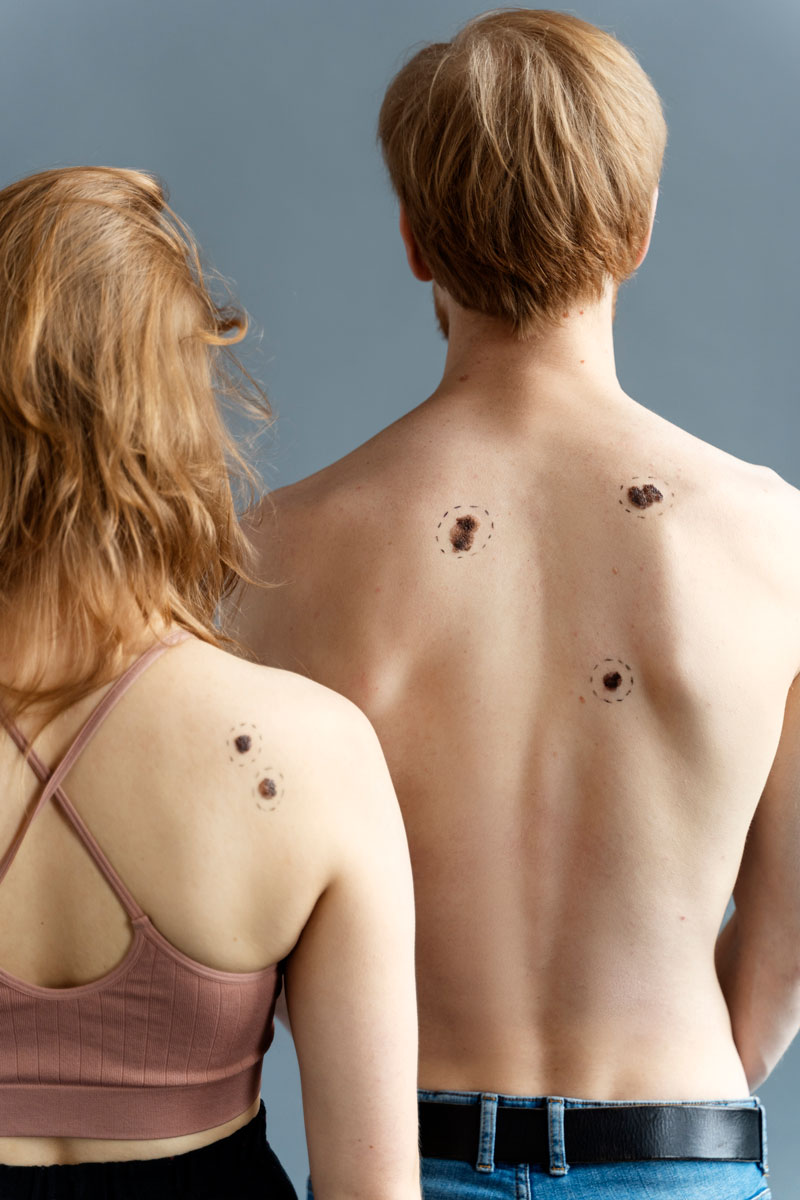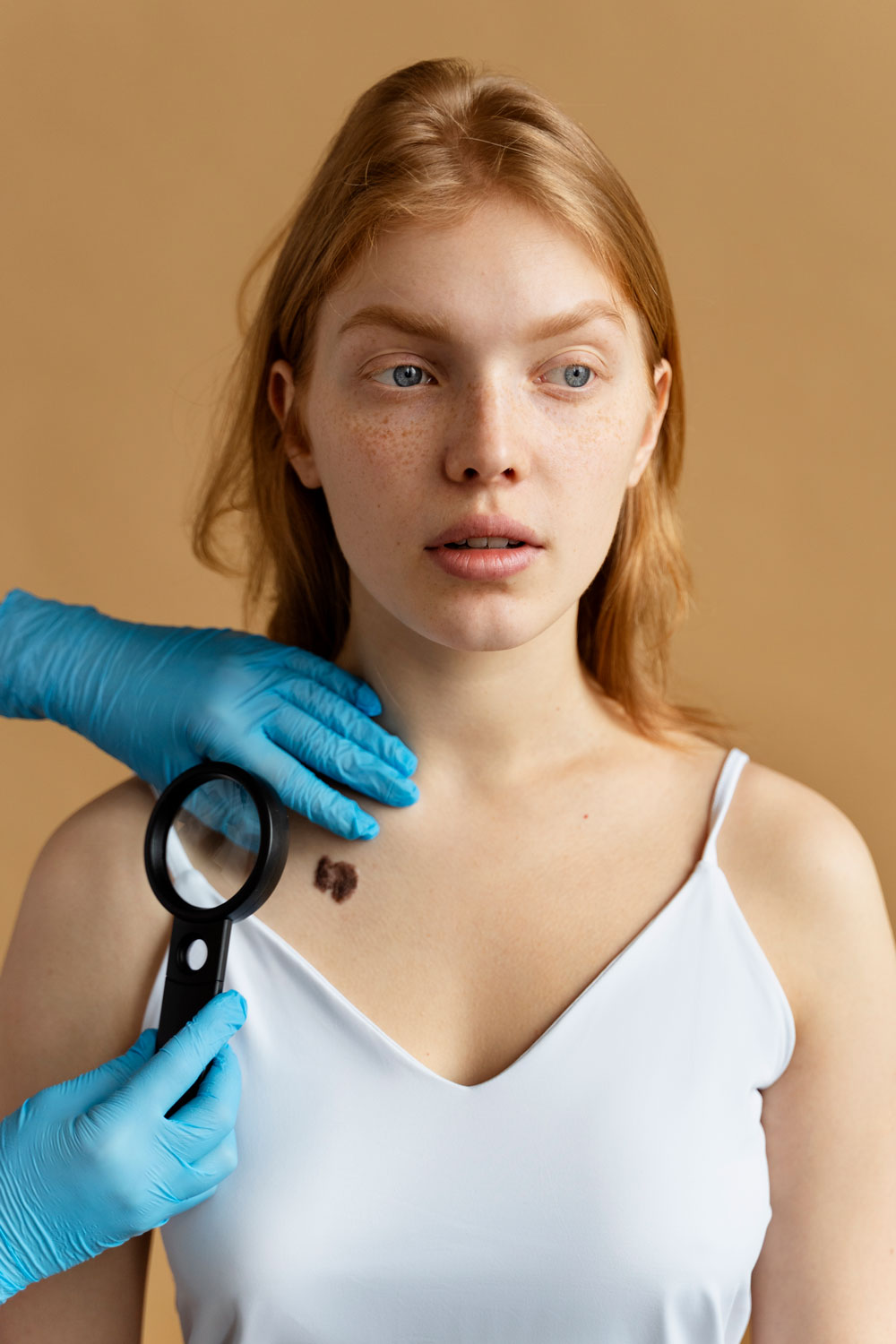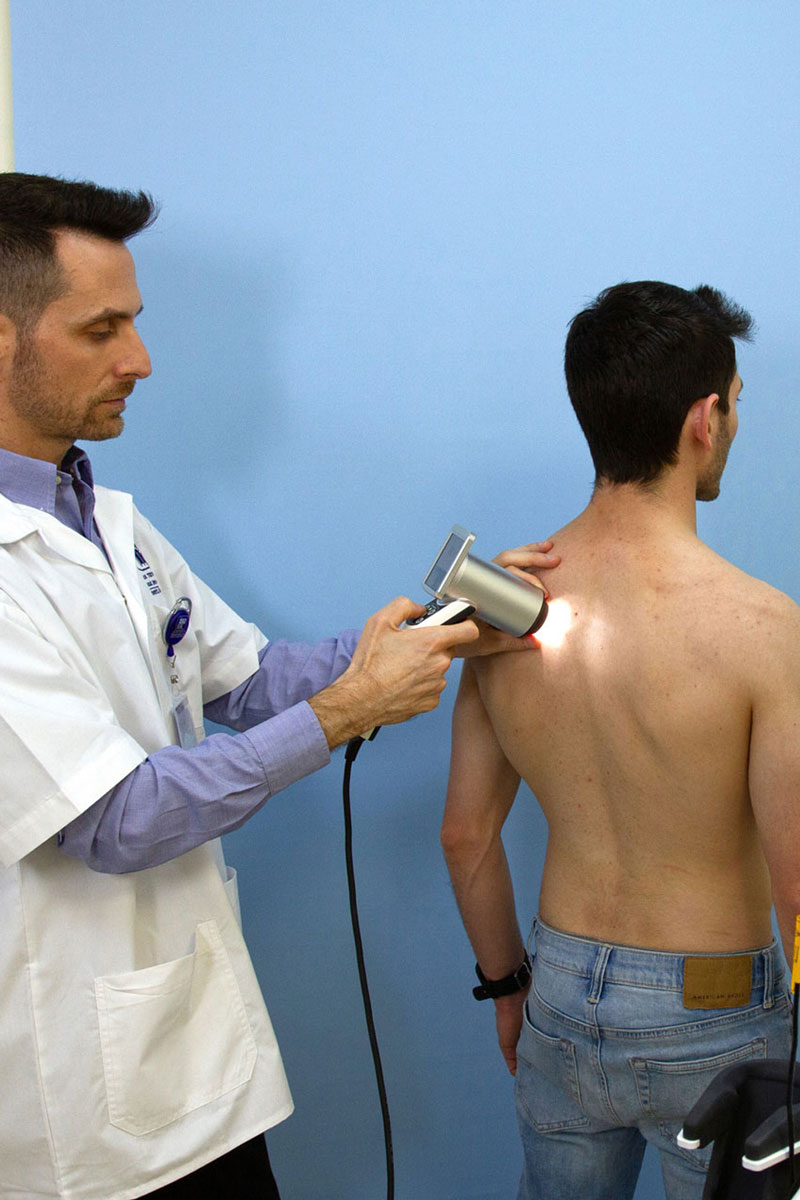7 Jabotinsky st. Moshe Aviv tower, 19th floor. Ramat-Gan
7 Jabotinsky st. Moshe Aviv tower, 19th floor. Ramat-Gan
דף הבית » Dermoscopic Examination of Suspicious Skin Lesions
Suspicious skin lesions can be pigmented lesions, i.e. brown-black, or unpigmented – i.e. skin tone up to pink, but the presence of pigment alone cannot indicate the nature of the finding, since skin cancers can be with or without pigment, as can benign lesions which do not require any treatment.


In the past we mainly used the ABCD method to locate suspicious skin lesions, acronyms for: Assymetry, Border, Color, Diameter. That is, asymmetric skin lesions, with an unclear border, with several shades of color and with a diameter greater than 0.5 mm are those that raise the suspicion of skin cancer. However, this method has not been proven to be particularly effective and is challenging to apply, especially for patients who are inexperienced in examining suspicious skin lesions.
Today, there are simpler and more advanced methods to locate suspicious skin lesions. First, let’s mention the “ugly duckling” method – according to which a skin lesion that is significantly different or unusual compared to the patient’s other skin lesions is a suspicious lesion that requires further investigation. The second method is the “change” method – a lesion that appeared recently or a lesion that changed recently is a suspicious lesion that requires further investigation.
is a dermoscopic examination of the lesion by a specialist dermatologist. The dermoscope (or dermatoscope) gradually entered the use of dermatologists in the 1990s, and with its entry into clinics and the accumulation of experience in its use, the ability of doctors to diagnose suspicious skin lesions improved dramatically. A dermoscope is a device consisting of a system of magnifying glasses, a polarized light source and a filter. The way the light is projected from the dermoscope towards the skin and returns to it through the filter towards the magnifying glass allows the doctor to look a little inside into the upper layer of the skin and identify structures that are not visible to the normal eye.
Therefore, by using a dermoscope, a specialist dermatologist with appropriate training in dermoscopy can in most cases decide whether the suspected lesion is benign or one that requires further investigation, including a surgical biopsy.

If you have located a suspicious lesion on the skin, especially if it is unusual, new or recently changed, contact a dermatologist as soon as possible in order to diagnose the lesion and decide on further treatment.
Give us a call or fill in your details and we will get back to you